
Fluorite Gemstone: Meaning, Properties, Uses & More
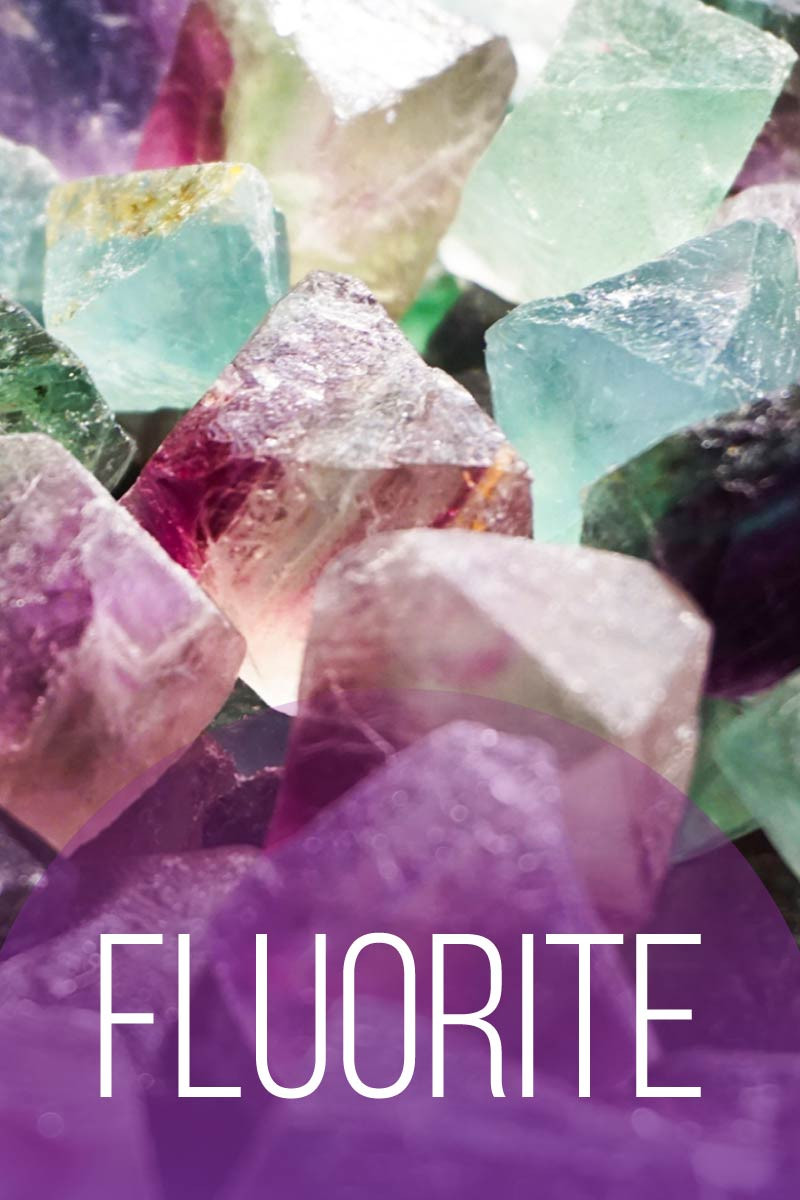 Fluorite is a kaleidoscopic gemstone known for its wide array of colors and stunning fluorescence, along with its myriad of uses in manufacturing. Dubbed “the most colorful mineral in the world,” fluorite gemstones define living in color.
Fluorite is a kaleidoscopic gemstone known for its wide array of colors and stunning fluorescence, along with its myriad of uses in manufacturing. Dubbed “the most colorful mineral in the world,” fluorite gemstones define living in color.
Legends say that rainbows live inside fluorite. “The Rainy State” of Illinois boasts fluorite as their state gemstone, along with hosting an annual fluorite festival!
In this guide, we’ll discuss fluorite’s captivating features, from the science behind fluorite crystal properties to how you can use different colors of fluorite for healing.

What Is Fluorite?
Fluorite is a gemstone with such variety, anyone can find their perfect fluorite companion.
Were you born under a winter zodiac sign? You’re in luck! Fluorite is the zodiac stone for Capricorn and Pisces.
Pisces personalities tend to struggle with emotional balance, so violet or blue fluorite is perfect for bringing peace. Hard-working Capricorns can benefit from clear fluorite’s clarifying properties.
If you have a Capricorn or Pisces friend, fluorite makes a great personalized gift!
Mineral Characteristics
Fluorite, or fluorspar, is a mineral composed of calcium and fluorine. As an allochromatic mineral, fluorite is colorless in its purest form. However, natural processes during its formation produce different colors.
Fluorite stones typically have color zones, but some change colors entirely. Color-changing fluorite is usually blue and shows sides of purple and green under incandescent lights.
On the Mohs mineral hardness scale, fluorite defines the 4 ranking, which means it’s one of the most fragile gemstones. But that doesn’t mean you can’t enjoy its properties for healing and jewelry!
Read on for all of fluorite’s chemical characteristics!
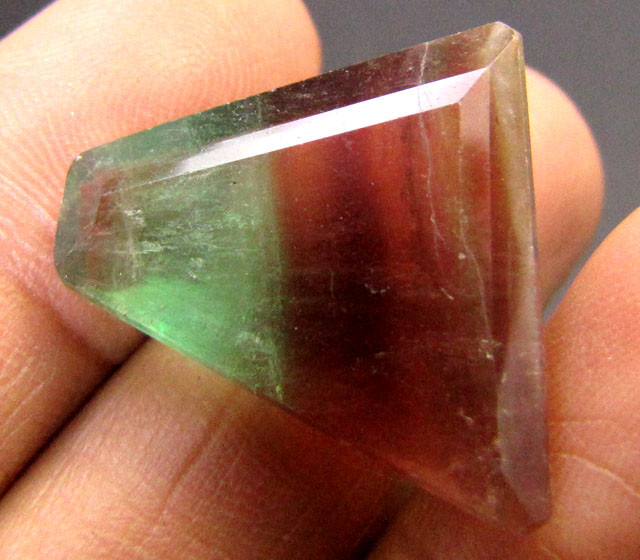
Fluorite Specifications and Characteristics
Color: Blue, purple, yellow, green, red, pink, brown, black, white, gray, or colorless
Crystal structure: Isometric/Cubic
Luster: Vitreous
Transparency: Translucent to transparent
Refractive Index: 1.43-1.45
Density: 3.17-3.56 (almost always 3.2)
Cleavage: Octahedral; perfect on [111], parting on [011]
Fracture: Subconchoidal to uneven
Luminescence: Fluorescence, phosphorescence, thermoluminescence, and triboluminescence are typically present
Optical Phenomenon: Sometimes color-changing effects; Blue or teal in fluorescent light to lilac or pale green in incandescent light
That covers the physical properties, but what about fluorite metaphysical properties?
Fluorite Stone Meaning
“Fluorite” comes from the Latin word, fluere, which means “flow,” for fluorite’s use as a flux material in smelting. The stone’s original name was fluorospar or fluorspar and these terms are still used to describe the gemstone today.
Fluorite’s color range and optical effects fascinated ancient peoples, leading to many fluorite crystal meaning interpretations. A common ancient belief was that fluorite contained crystallized light, allowing its wearer to gain brilliant insight or enlightenment.
Ancient Greeks interpreted fluorite meaning similarly to another gem: amethyst. Both stones supposedly prevented excessive drunkenness. As such, fluorite came to symbolize purity and sobriety.
In ancient China, purple fluorite meaning tied to protection and dreams. Violet fluorite stones symbolized a shield of safety and a “Dream Crystal,” warding off nightmares and encouraging lucid dreaming.
To ancient Egyptians, rainbow fluorite meaning connected them to the gods. Rainbow fluorite was a popular material for carving scarabs placed on various statues of deities.
Speaking of deities, the Hindu fluorite spiritual meaning is associated with Vac, goddess of the spoken word, and Annapurna, goddess of food.
We know what it means, but what does fluorite do?

Fluorite Healing Properties
All gemstones contain energies that grant them healing abilities, and these are called healing stones. What does fluorite offer holistically?
The abundance of fluorite crystal benefits has led to diverse nicknames, from “The Genius Stone” to “Stone of Unity.”
Since blue is among the rarest fluorite colors, blue fluorite crystals hold significant power. Like other blue gemstones, blue fluorite can offer wisdom, tranquility, and inspiration.
Beyond blue fluorite’s powers, what is fluorite used for?
Physical Healing
Physical healing benefits of fluorite generally apply to problems in the throat or intestinal tract. Other benefits include strengthening joints and bone structure, particularly teeth.
Additionally, fluorite is purported to increase the body’s ability to fight off infections and begin repairing itself. Reducing vertigo, light-headedness, and dizziness are among fluorite’s physical healing powers as well.

Emotional Healing
Emotionally, fluorite benefits anyone struggling with confusion, disillusionment, or a lack of direction. Fluorite can offer protection from negative thoughts and guide you toward your true purpose in life.
Do you struggle with retaining information? Maybe you have so much to keep track of, your brain shuts down and drags your confidence down with it. Fluorite can help!
Fluorite healing properties can boost concentration and clarify direction, getting back on track toward success.
Chakra Healing
Fluorite is so versatile, it can clear all of the seven chakras. However, certain colors like purple and green fluorite can open specific chakras.
Purple fluorite can open the crown chakra, where the mind connects to the cosmos. A blocked crown chakra leads to disconnection and cynicism. Balancing this chakra with violet fluorite can enlighten you to your higher calling.
For heart chakra healing, we recommend green fluorite, as green represents the heart chakra’s aura. Green fluorite meaning as a growth crystal reflects an open heart chakra, where you can accept past heartache and allow yourself to be vulnerable.
One thing you don’t want to be vulnerable to is a rip-off. Read on to learn what determines fluorite’s true value.
Fluorite Gemstone Properties
When buying a gemstone, it’s best to know what traits to look for, as specific factors affect a stone’s value. For fluorite, the value factors to know are color, clarity, and cut.
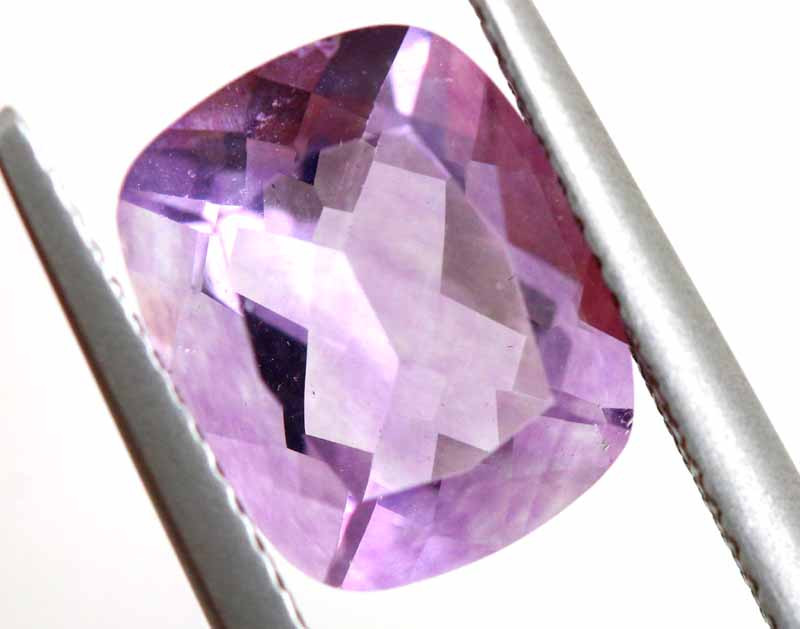
Color
Fluorite comes in every color of the rainbow and then some. Besides the colorless variety, the most common colors you’ll see on fluorite are purple and green. Rarer colors include black, brown, pink, and red-orange.
The majority of fluorite only has one color, but some fluorite crystals exhibit color banding, or multiple colors distributed across the gem. You may see four to five colors on one fluorite crystal!
Banded fluorite colors are usually some combination of blue, green, and purple. Also, yellows and oranges may be present, giving multi-colored specimens the name “rainbow fluorite.”
Clarity & Luster
When grading clarity, experts look at the amount and visibility of inclusions in the stone. Since colored gemstones often owe their hues to inclusions, we use a simplified system.
Based on the colored gemstone grading system, fluorite has Type II clarity. Type II gems typically have inclusions, but the best-quality specimens are eye-clean, meaning they have no visible inclusions.
In terms of luster, the highest-quality fluorite is transparent while lower-quality fluorite is translucent.
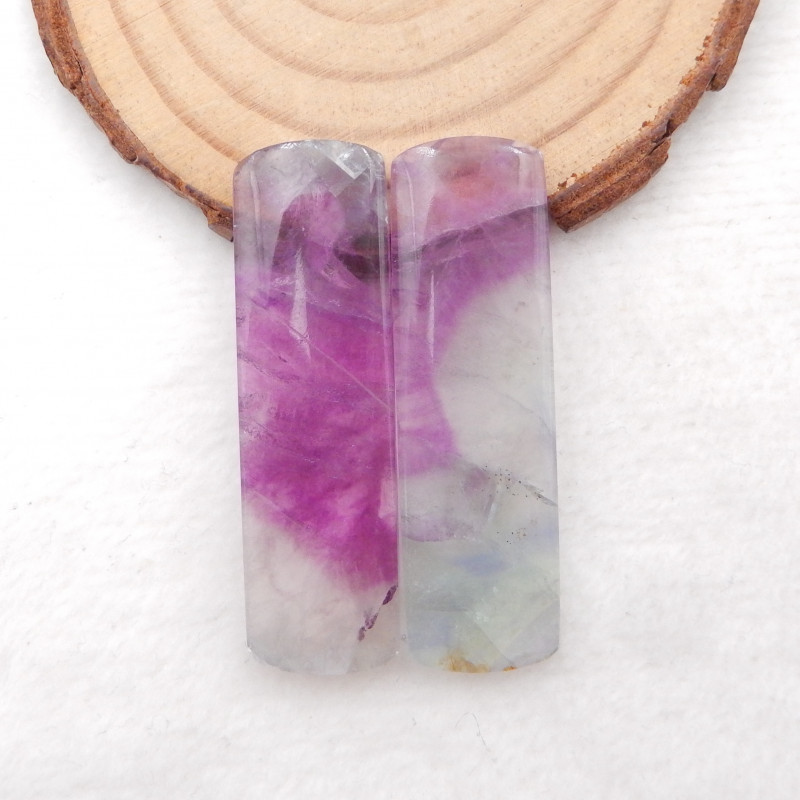
Cut
The most popular gemstone cut for fluorite is a trillion, as trillions maximize rough material and protect the gem from breaking along its cleavage.
Most often, fluorite crystals become cabochons or beads. Fluorite’s fragility means its use as a semi-precious gemstone is limited. Still, seasoned experts often create beautifully intricate fluorite carvings.
In fact, carving fluorite is a centuries-old practice!
Fluorite Stone History
Fluorite’s history is a fascinating journey through language. The stone’s first appearance in print was in German scientist Georgius Agricola’s 16th-century work Bermannus; or a dialogue about the nature of metals (translated from the Latin title.)
Agricola called the mineral fluorspar, a version of the German Flusspat, for “river,” and spat, which refers to a gypsum-like mineral.
The fluorite name didn’t come until 1797, when Italian mineralogist Carlo Antonio Napione used the Latin fluere to name the mineral.
In ancient times, the Latin murrina or myrrhina referred to fluorite. In Naturalis Historia, Pliny the Elder described fluorite carvings as the highest symbol of luxury and status.
Legends say Roman general Pompey took six fluorite cups from Mithridates after defeating him and taking over Pontus. Another Roman elite, Petronius, was falsely accused of treason and sentenced to death. Out of spite, Petronius broke his costly fluorite wine-dipper before ending his own life so the emperor wouldn’t inherit it.
In America, Natives created fluorite carvings and jewelry, as evidenced by 2nd-century artifacts uncovered within burial sites near Mississippi.
All over Europe, fluorite flourished as a carving material. Numerous societies used fluorite to create figurines, totems, dishware, and more.
Adding weight to fluorite’s spiritual power is an 18th-century German experiment on proclaimed clairvoyant Friederike Hauffe. Experimenters wanted to test gemstones’ effects on a spiritually sensitive person, and holding fluorite made Hauffe enter a trance-like state.
We can’t know for sure if the experiment was up to scientific standards, but there’s plenty of evidence for fluorite’s scientific applications!
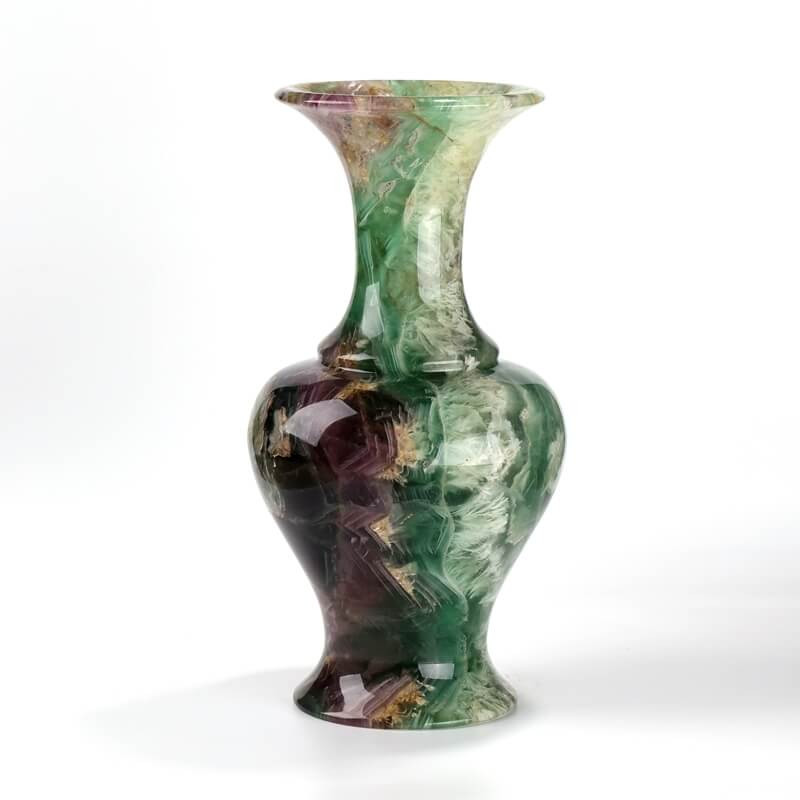
Chemical and Industrial Uses
When fluorite was discovered, the element fluorine was still unknown, so fluorite eventually led to fluorine’s name. Fluorite also inspired the word “fluorescence” in 1852, after geologist George Stokes recognized the glowing quality in some green fluorite specimens.
Besides fluorescent optical effects, fluorite properties make it a valuable material in the optics industry.
As a singly-refractive material, colorless fluorite doesn’t distort light, so fluorite lenses produce crystal-clear images. In fact, colorless transparent fluorite has lower dispersion than any glass, making it great for cameras, telescopes, and fluorescence microscopes.
In the late 1800s, Victor Schumann became the first person to study fluorite’s potential for lenses and prisms. Since then, scientists have created processes for producing synthetic gems, so synthetic fluorite has become more common for lenses.
Other non-gemstone fluorite uses include manufacturing hydrofluoric acid, producing fluorine gas, and studying Alzheimer’s disease (according to a 2018 scientific journal.)
Just for reference, “fluorspar” nowadays refers to fluorite used for scientific and manufacturing processes, while fluorite refers to the gemstone.
Whether it’s fluorite or fluorspar, they both form the same way.

Fluorite Origins and Sources
Fluorite forms through hydrothermal activity. Underground, magma heats groundwater above it, causing nearby elements like calcium and fluorine to dissolve into the water. As the magma cools, the minerals crystallize to create fluorite!
One remarkable part of fluorite’s formation is its coloration. For most colored gemstones, inclusions like copper or iron slip in during formation and create new colors. But fluorite’s colors are a trick of the light. We’ll explain.
Fluorite color comes about from irradiation, heat, and/or the presence of rare earth elements (REE). Rare earth elements are a group of heavy metals that all have the same chemical properties but unique individual properties.
The unique properties of REE allow fluorite’s crystalline structure to change, causing light to diffract differently along each area of the stone. The result? The same chemical makeup throughout but visually distinct colors to the eye. Pretty neat, right?
So, in which locations do fluorite’s dazzling colors surface?
Mining Locations
The majority of fluorite comes from China, Mexico, and South Africa. Substantial amounts also come from Russia, Spain, and Mongolia.
Where else can you find fluorite?
Brazil
Canada
Egypt
France
Germany
Kenya
Mexico
Morocco
Namibia
North Korea
Romania
United Kingdom
As you can see, fluorite is pretty abundant, making it an affordable treasure!

Fluorite Price and Value
The number-one fluorite price factor is color. Vibrant, deeply saturated colors and one-of-a-kind color patterns command higher prices. In terms of clarity, eye-clean, transparent fluorite is always costlier than translucent material with visible imperfections.
The most affordable cut is fluorite cabochons, which typically range from $1.50-$5 per carat. Still, faceted fluorite gems are pretty affordable, usually $3-$8 per carat.
Color-changing fluorite ranges from $10-$25 per carat. Rough fluorite is the most affordable, between $0.05-$3 per carat.
Regardless of price, a delicate stone like fluorite needs a little extra TLC.
Fluorite Care and Maintenance
Caring for fluorite jewelry starts when you pick it out. Because of its cleavage and softness, fluorite can break with one blow. Fluorite earrings or pendants are the safest, and protective jewelry settings are a must.
To clean fluorite, use soapy water and a soft cloth to carefully wipe off debris, then rinse and gently dry it. Fluorite is mildly water-soluble, so avoid leaving it in water or around harsh chemicals. Lastly, be sure to store fluorite in an extra-soft cloth separately from other gemstones and jewelry.

Ready to Find your Fluorite?
That wraps up our comprehensive guide on fluorite gemstones! Whether you wear fluorite as a zodiac stone, use it for chakra healing, or decorate with it, fluorite is sure to infuse vibrance into your life.
Search the Gemstone Encyclopedia
Related Auctions
Related Articles
Originally the Birthstones or gemstones were associated with a zodiac sign or the month of a individuals birth. Find out what your stone is and view the stones we have for sale
8th Feb 2021
There are dozens of quartz and chalcedony gems with various colors and patterns. Learn all about quartz properties and every type of quartz, from amethyst and agate to plasma and phantom quartz!
15th Oct 2020
Hackmanite is a pink to violet sodalite gem known for its unique color-change and luminescence. Learn why hackmanite is special, from its rare qualities to the types of hackmanite jewelry available.
28th Mar 2018
Latest Articles
Tantalite is a group of red, brown, or black minerals containing the rare and valuable element tantalum. Discover the uses, history, prices, and properties of tantalite gemstones in this guide!
11th Nov 2024
Hodgkinsonite is a very rare collector’s gemstone known for its vibrant pink or purple hues, only found in New Jersey, USA. Learn hodgkinsonite’s prices, history, properties, and traits in this guide!
9th Jun 2024
Canasite is a rare mineral usually found as greenish-yellow inclusions in charoite but also known as a purple gemstone. Learn canasite’s history, varieties, properties, and prices in this guide.
27th May 2024
Article Categories
How To's is where you will find helpful articles from gem Rock Auctions on how to cut gemstones, select gemstones and buy gemstones.
9 Articles





